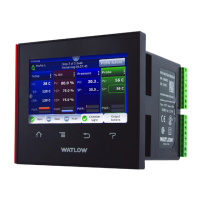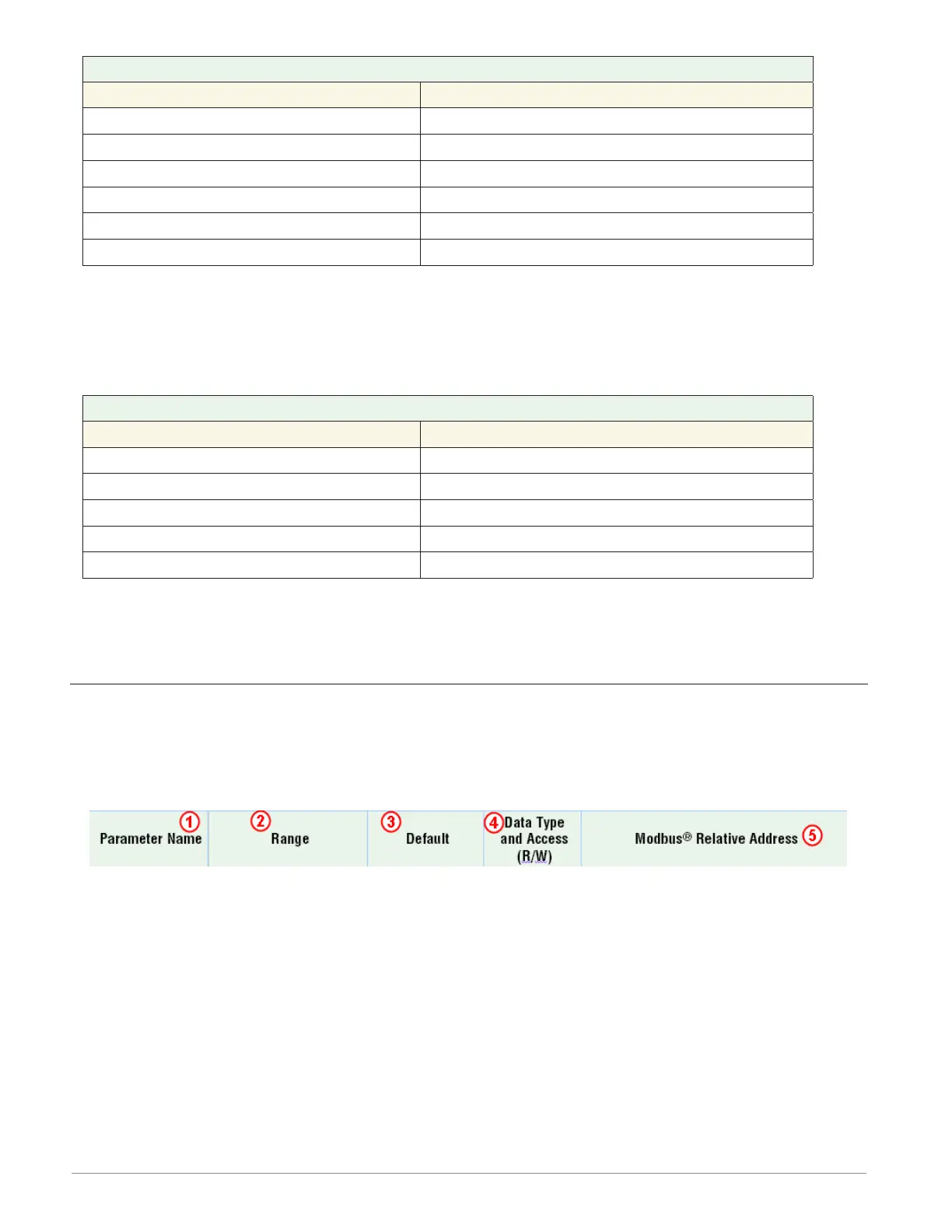Watlow F4T • 223 • Chapter 6 Appendix
Profile Listing As Originally Created
Profile Listing (as viewed in controller) Profile List Member - Modbus Registers
Heat Only 48002 = 1
Heat/Cool 48004 = 2
Blk Furnace 48006 = 3
Part Chamber 48008 = 4
Part Cool Down 48010 = 5
Roaster 48012 = 6
To load and run "Part Cool Down" above, the value of 5 would be written to Modbus register
16558 (Start Profile) while then writing 1782 (start) to register 16562 (Profile Action Request).
If the profile listing were modified where Profile 3 is deleted, note the changes in the table
below for the profile listing and associated Profile List Member - Modbus registers.
Profile Listing After Changes
Profile Listing (as viewed in controller) Profile List Member - Modbus Registers
Heat Only 48002 = 1
Heat/Cool 48004 = 2
Part Chamber 48006 = 4
Part Cool Down 48008 = 5
Bean Roaster 48010 = 6
Note that all of the profiles following the deletion point where shifted up (name and index
value) and Modbus register 48000 (Profile List Count) would now be equal to 5. Notice that
for the same profile mentioned above (Part Cool Down) the index did not change but it was
moved from List Member 5 to 4 where index 3 no longer exists.
Modbus Table Orientation
In the tables that follow, each page will contain a header that describes available parameters
and their associated Modbus addresses. Further explanation can be found below. When en-
countered throughout this document, the word "default" implies as shipped from the factory.
① Parameter Name - identifies the member name within a particular function.
② Range - Defines options available for this prompt, i.e., min/max values (numerical), yes/no,
etc... (further explanation below).
③ Default - Values as delivered from the factory.
r Data Type and Access (R/W) - Unsigned 16 bit integer, Signed 32-bit, long, string = ASCII (8
bits per character), float = IEEE 754 32-bit, RW = Readable, Writable
t Modbus Relative Address - Identifies unique parameters addresses using either the Modbus
RTU or Modbus TCP protocols (further explanation below).

